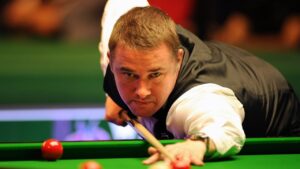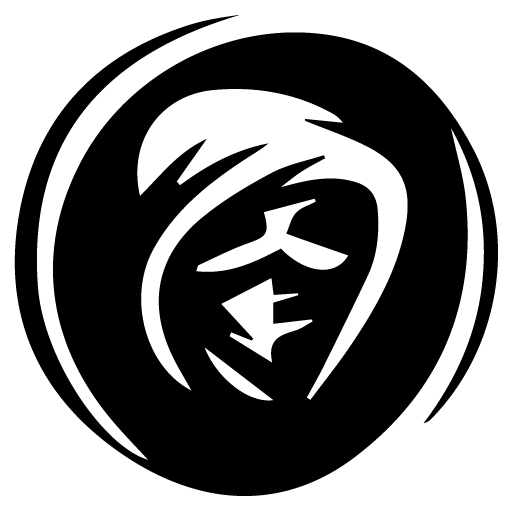Apparatus for Playing the Game of Snooker

1. A legally potted ball entitles the striker to continue at the table until he fails to legally pot a ball.
2. On all shots, the striker must comply with the appropriate requirements of Rules of Play 5 and 6. It is not necessary to cause the cue ball or an object ball to contact a cushion or drop in a pocket after the cue ball has contacted a legal object ball (ball on). Failure to contact a legal object ball first is a foul.
3. As long as reds are on the table, the incoming striker (player taking his first stroke of an inning) always has a red as his legal object ball (ball on).
4. Any red balls potted on a legal shot are legally potted balls; the striker need not call any particular red ball(s), pocket(s) or details of how the pot will be played.
5. When the striker has a red ball as his “ball on” (legal object ball), he must cause the cue ball’s first contact to be with a red ball. Failure to do so is a foul (See Penalties For Fouls)
6. After the striker has scored a red ball initially, his next legal object is a color, and as long as reds remain on the table he must alternate his play between reds and colors (though within each group he may play a ball of his choice). When reds remain on the table and a color is his object, the striker must (a) designate prior to stroking which color ball is his object (that specific color is then his “ball on”), and (b) cause the cue ball’s first contact with a ball to be with that colored ball. If the striker fails to meet these requirements, it is a foul (See Penalties For Fouls).
7. If the striker’s ball on is a red, and he pots a color, it is a foul.
8. If the striker’s ball on is a color, and he pots any other ball, it is a foul.
9. Jump shots are illegal in International Snooker. It is a foul if the striker intentionally causes the cue ball to jump (rise from the bed of the table) by any means, if the jump is an effort to clear an obstructing ball.
10. While reds remain on the table, each potted color is spotted prior to the next stroke (see Spotting Balls below for spotting rules). After a color has been spotted, if the striker plays while that ball is incorrectly spotted (and opponent or referee calls it before two such plays have been taken), the shot taken is a foul. If the striker plays two strokes after such error without its being announced by opponent or referee, he is free of penalty and continues playing and scoring normally as though the spotting error simply had not occurred. The striker is responsible for ensuring that all balls are correctly spotted before striking. If the striker plays while a ball(s) that should be on the table is not a foul may be awarded whenever the foul is discovered during the striker’s inning. Any scoring prior to the discovery of the foul will count.
11. When no reds remain on the table, striker’s balls on become the colors, in ascending numerical order (2,3,4,5,6,7). These legally potted colors are not spotted after each is potted; they remain off the table. (The black (7) ball is an exception in the case of a tie score; see Scoring.)
Illegally Potted Ball: Reds illegally potted are not spotted; they remain off the table. Colors illegally potted are spotted. (See Spotting Balls.)
Object Balls Jumped off the Table: Reds jumped off the table are not spotted and the striker has committed a foul. Colors jumped off the table are spotted and the striker has committed a foul. (See Penalties For Fouls)
Spotting Balls: Reds are never spotted. Colors to be spotted are placed as at the start of the game. If a color’s spot is occupied (to mean that to spot it would make it touch a ball), it is placed on the spot of the highest value color that is unoccupied. If all spots are occupied, the color is spotted as close as possible to its original spot on a straight line between its spot and the nearest point on the top (foot) cushion.
Cue Ball after Jumping off the Table: Incoming player has cue ball in hand within the Half Circle. When cue ball is in hand within the Half Circle (except the opening break), there is no restriction (based on position of reds or colors) as to what balls may be played; striker may play at any ball on regardless of where it is on the table.
Touching a Ball: While balls are in play it is a foul if the striker touches any object ball or if the striker touches the cue ball with anything other than the tip during a legal stroke.
Snookered: The cue ball is snookered when a direct stroke in a straight line to any part of every ball on is obstructed by a ball or balls not on. If there is any one ball that is not so obstructed, the cue ball is not snookered. If in-hand within the Half Circle, the cue ball is snookered only if obstructed from all positions on or within the Half Circle. If the cue ball is obstructed by more than one ball, the one nearest to the cue ball is the effective snookering ball.
Angled: The cue ball is angled when a direct stroke in a straight line to any part of every ball on is obstructed by a corner of the cushion. If there is any one ball on that is not so obstructed, the cue ball is not angled. If angled after a foul the referee or player will state “Angled Ball”, and the striker has the choice to either (1) play from that position or (2) play from in hand within the Half Circle.
Occupied: A spot is said to be occupied if a ball cannot be placed on it without its touching another ball.
Touching Ball: If the cue ball is touching another ball which is, or can be, on, the referee or player shall state “Touching Ball.” Thereafter the striker must play away from it or it is a push stroke (foul). No penalty is incurred for thus playing away if (1) the ball is not on; the ball is on and the striker nominates such ball; or (3) the ball is on and the striker nominates, and first hits, another ball. [If the referee considers that a touching ball has moved through an agency other than the player, it is not a foul.]

Apparatus for Playing the Game of SnookerApparatus for Playing the Game of Snooker
